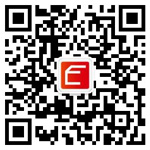

- Description
- Additional Information
- Readable Documents
- Assay Principle
- Reviews
Key Benefits
- Highly effective and stable chemiluminescent assay for SEAP.
- Extremely sensitive, detect alkaline phosphatase at attogram level.
- Simple and fast assay-add the reagent directly to your experimental samples. Plate can be incubated and read in 5 min.
- Works for cell culture media and tissue lysates.
Additional information
| Kit Size | 100 |
|---|
Secreted alkaline phosphatase (SEAP) is widely used as a reporter to study gene expression. SEAP is secreted into the culture supernatant of the transfected cell lines. SEAP activity in the culture medium reflects changes in intracellular concentrations of SEAP mRNA and protein. The changes of gene expression can be easily assayed using the same cultures by repeated sampling. Cell Technology’s aCellaTM – SEAP detection kit utilizes a Chemiluminescent-based assay technique to detect SEAP reporter gene expression. It provides an extremely sensitive tool to quantitate SEAP and analyze transcriptional and promoter activity in transfected cells.
In the assay, a chemiluminescent substrate was used to detect the Secreted Alkaline Phosphatase in cell culture. The stabilized 1, 2-dioxetane substrate provide high signal to noise ratio, wide dynamic range, rapid results and excellent reproducibility. The SEAP enzyme transfers the phosphoryl residue via a phosphoryl-enzyme intermediate. The intermediate is not stable and decomposed and emits light for detection. The assay can detect alkaline phosphatase at attogram level. The kit provides sample material for 100 assays in a 96-well plate format.
Figure 1. Standard curve of Alkaline Phosphatase (AP). 50 µl serial dilutions of AP (Starting dose 100 mU in tubes) were added to the wells of 96-well luminescent plate. 50 µl of Chemiluminescent substrate was added and the plate was read immediately with a luminometer.
Figure 2. Detection of the functional activity of NF-ĸB/SEAP stable reporter cell line. NF-ĸB/SEAP reporter cells (IML-101) were plated in 96-well plates at 50,000 cells/well. After 24 hours of incubation, cells were stimulated with different doses of TNFα for another 24 hours. 50 µl culture supernatant was added to the wells of 96-well white opaque luminescent plate. 50 µl of chemiluminescent substrate was added and the plate was read immediately with a luminometer.
Figure 3. Inhibition of TNFα activity by a quinazoline TNFα inhibitor (EMD Millipore Cat# 545380-34-5) with NF-ĸB/SEAP stable reporter cell line. NF-ĸB/SEAP reporter cells (IML-101) were plated in 96-well plates at 50,000 cells/well. After 24 hours, 10 ng/ml of TNFα and different dose of TNFα inhibitors were added into each wells. Cells were incubated at 37°C for 24 hours. 50 µl culture supernatant was added to the wells of 96-well white opaque luminescent plate. Then 50 µl of Chemiluminescent substrate was added and the plate was read immediately with a luminometer.
| Document Title |
| aCellaSEAPProtocol |
Cell Signaling Technology (CST) 是一家由科学家创立的私营家族公司,致力于提供全球最高品质的创新研究和诊断产品,加速生物学认知以及实现个体化医疗。CST坚持自主生产和严格验证,其高质量的产品和专业的研发精神已被全球客户认可,被公认/票选为细胞信号研究的金标准、最佳抗体*、研究者的选择*、PTM(蛋白翻译后修饰)年度抗体公司*、十年抗体品牌*等(*来自CiteAb、LISA数据报告)。
CST提供最高品质的特色信号蛋白及磷酸化、甲基化、乙酰化、泛素化、SUMO化等翻译后修饰抗体,蛋白翻译后修饰筛选试剂盒及服务,还有偶联抗体,二抗,ChIP试剂盒,细胞因子,ELISA试剂盒,细胞检测试剂盒,蛋白实验配套试剂等,为您提供蛋白相关实验的一站式解决方案。















